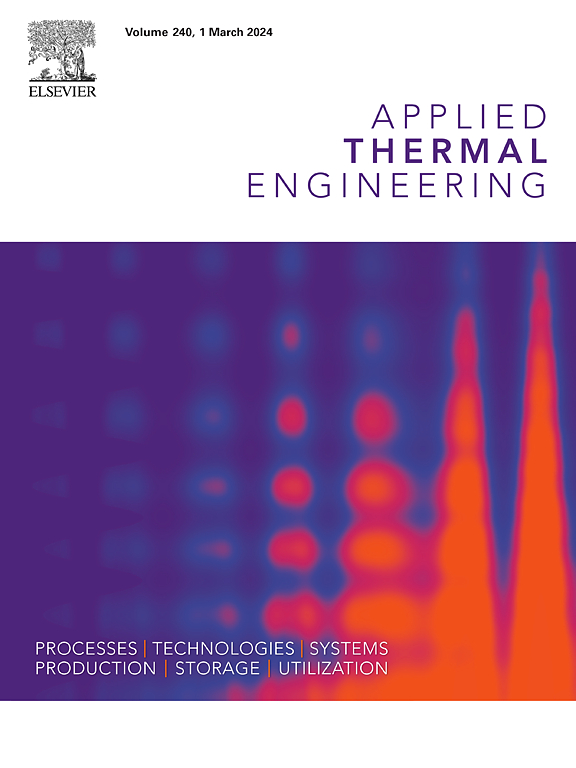Performance enhancement of latent heat thermal energy storage systems via dynamic melting process of PCM under different control strategies
IF 6.1
2区 工程技术
Q2 ENERGY & FUELS
引用次数: 0
Abstract
Latent heat thermal energy storage (LHTES) systems merging high energy densities with near isotherm operations have made a reliable solution to ease the intermittence difficulties of renewable energy and manage periodic energy demands to ensure supply–demand balances on electricity grids. This study experimentally and numerically explores the liquefaction characteristics of phase change material (PCM) in the LHTES tank with the dynamic melting technique, involving the liquid PCM recirculation in the liquefying process to enhance the melting outcomes. Experimental measurements are conducted to investigate the dynamic melting progression for revealing the system effectiveness in terms of the complete melt time and mean power with different control strategies modifying the formations and inlet velocities of recirculating PCM flows. The computational fluid dynamics (CFD) simulations are also conducted to resolve the liquid fraction, vorticity and temperature distributions for offering the insights of the transfiguration of heat transfer and liquefaction behaviors. The photos of ice-water interfaces and measured temperature data in the LHTES tank are thus acquired to verify the computational model generating the CFD predictions. The performance assessments signpost the optimization of dynamic melting arrangements adopting the top to bottom layout with a PCM inlet velocity of 0.22 m/s, achieving the reduction of full melting time by 48.1 % and the enhancement of estimated mean power by 132.6 %, respectively.
不同控制策略下通过 PCM 的动态熔化过程提高潜热蓄能系统的性能
潜热蓄能(LHTES)系统兼具高能量密度和接近等温线的运行特性,是缓解可再生能源间歇性难题和管理周期性能源需求以确保电网供需平衡的可靠解决方案。本研究通过实验和数值计算,利用动态熔化技术探讨了相变材料(PCM)在 LHTES 罐中的液化特性,其中涉及液化过程中的液态 PCM 再循环,以提高熔化效果。通过实验测量来研究动态熔化过程,以揭示不同控制策略下完整熔化时间和平均功率的系统有效性,这些控制策略改变了再循环 PCM 流动的形式和入口速度。此外,还进行了计算流体动力学(CFD)模拟,以解析液体分数、涡度和温度分布,从而深入了解传热和液化行为的变化。因此,获得的冰水界面照片和 LHTES 罐内的实测温度数据可用于验证产生 CFD 预测值的计算模型。性能评估表明,采用 0.22 米/秒 PCM 入口速度的自上而下布局优化了动态熔化安排,使完全熔化时间缩短了 48.1%,估计平均功率提高了 132.6%。
本文章由计算机程序翻译,如有差异,请以英文原文为准。
求助全文
约1分钟内获得全文
求助全文
来源期刊

Applied Thermal Engineering
工程技术-工程:机械
CiteScore
11.30
自引率
15.60%
发文量
1474
审稿时长
57 days
期刊介绍:
Applied Thermal Engineering disseminates novel research related to the design, development and demonstration of components, devices, equipment, technologies and systems involving thermal processes for the production, storage, utilization and conservation of energy, with a focus on engineering application.
The journal publishes high-quality and high-impact Original Research Articles, Review Articles, Short Communications and Letters to the Editor on cutting-edge innovations in research, and recent advances or issues of interest to the thermal engineering community.
 求助内容:
求助内容: 应助结果提醒方式:
应助结果提醒方式:


